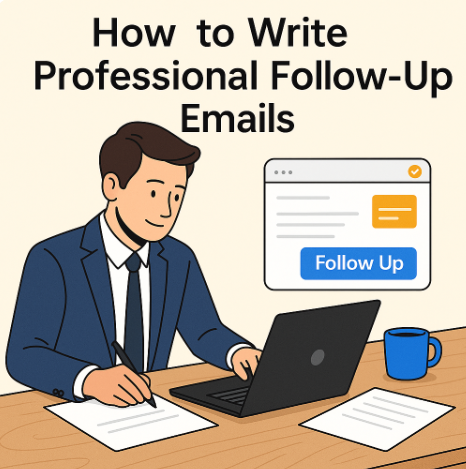
Sending a follow-up email can feel uncomfortable, but it is an essential part of professional communication. Whether you are checking on a job application, reminding a client of an unpaid invoice, or simply following up after a meeting, the way you write your email matters. A clear and polite follow-up message can make the difference between being ignored and receiving a timely response.
🌟 Why Follow-Up Emails Are Important
Many professionals are busy and may overlook your initial email. A follow-up serves as a gentle reminder while showing that you are responsible and proactive. Well-written follow-up emails help maintain professional relationships and keep projects moving forward.
🛠️ Key Tips for Writing Follow-Up Emails
1. Choose the Right Timing
Don’t send a follow-up too quickly. Waiting 2–3 business days is often ideal. For job applications, a week might be more appropriate.
2. Keep It Short and Clear
The recipient should understand your purpose immediately. Limit your email to a few short paragraphs that get straight to the point.
3. Maintain a Polite Tone
Always use respectful language. Avoid sounding pushy or impatient. Phrases like “Just checking in” or “I wanted to kindly follow up” are effective.
4. Provide Context
Remind the recipient of your previous message. Mention the date of your last email or the subject of your earlier conversation.
5. End with a Clear Call to Action
Close your email with a specific request, such as asking for a reply, an update, or a meeting time. This makes it easier for the recipient to respond.
✅ Sample Follow-Up Email
Subject: Following Up on Our Meeting Last Week
Dear [Recipient’s Name],
I hope you’re doing well. I wanted to kindly follow up regarding our meeting on [date]. As discussed, I’m happy to provide any additional information you might need. Please let me know if there’s a convenient time to continue our conversation.
Thank you for your time and attention, and I look forward to your response.
Best regards,
[Your Name]
Follow-up emails are not about bothering someone; they are about showing professionalism and persistence. With the right timing, clear structure, and polite tone, you can send follow-up messages that get results while maintaining positive relationships.